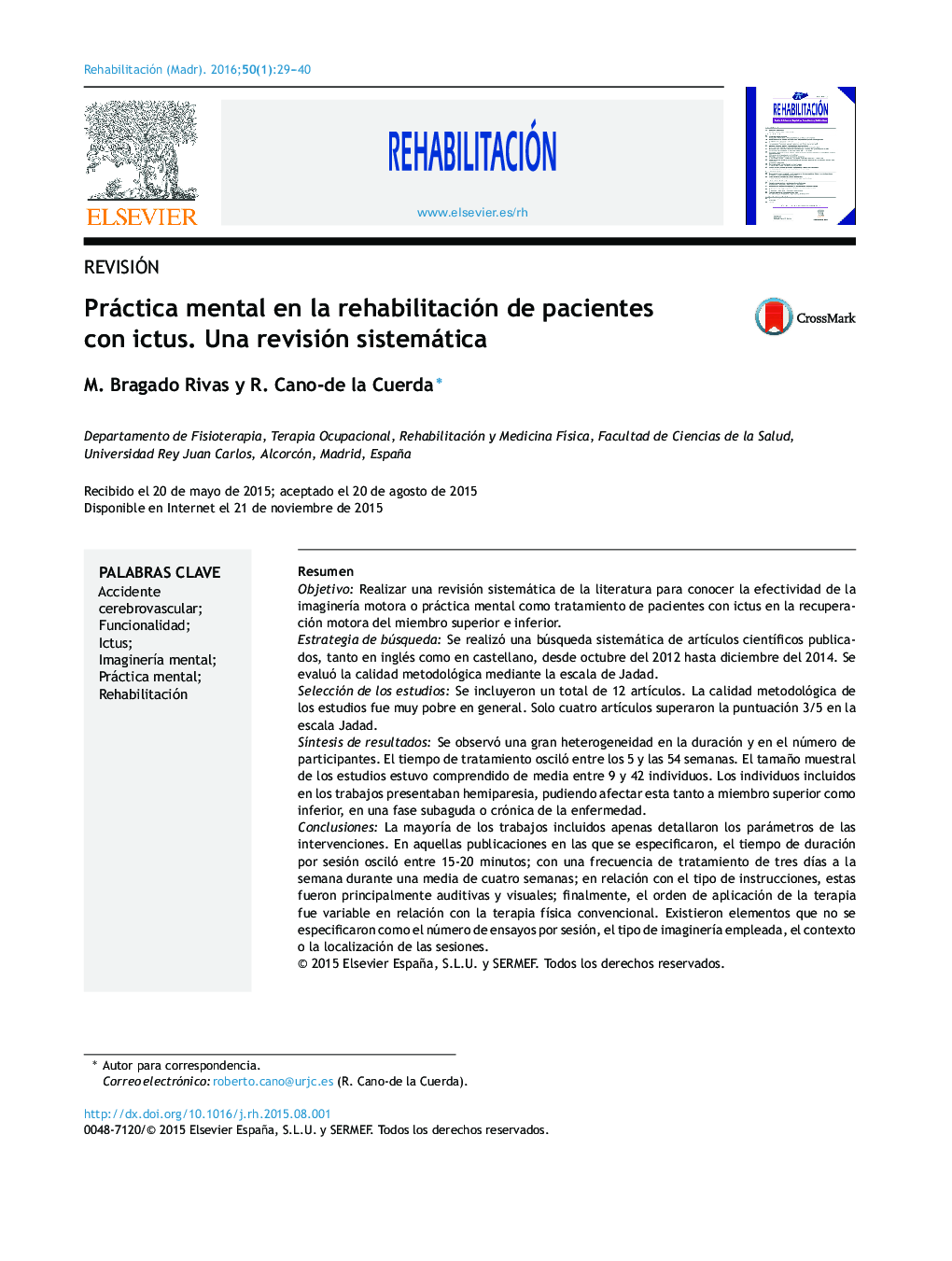| Article ID | Journal | Published Year | Pages | File Type |
|---|---|---|---|---|
| 4084791 | Rehabilitación | 2016 | 12 Pages |
ResumenObjetivoRealizar una revisión sistemática de la literatura para conocer la efectividad de la imaginería motora o práctica mental como tratamiento de pacientes con ictus en la recuperación motora del miembro superior e inferior.Estrategia de búsquedaSe realizó una búsqueda sistemática de artículos científicos publicados, tanto en inglés como en castellano, desde octubre del 2012 hasta diciembre del 2014. Se evaluó la calidad metodológica mediante la escala de Jadad.Selección de los estudiosSe incluyeron un total de 12 artículos. La calidad metodológica de los estudios fue muy pobre en general. Solo cuatro artículos superaron la puntuación 3/5 en la escala Jadad.Síntesis de resultadosSe observó una gran heterogeneidad en la duración y en el número de participantes. El tiempo de tratamiento osciló entre los 5 y las 54 semanas. El tamaño muestral de los estudios estuvo comprendido de media entre 9 y 42 individuos. Los individuos incluidos en los trabajos presentaban hemiparesia, pudiendo afectar esta tanto a miembro superior como inferior, en una fase subaguda o crónica de la enfermedad.ConclusionesLa mayoría de los trabajos incluidos apenas detallaron los parámetros de las intervenciones. En aquellas publicaciones en las que se especificaron, el tiempo de duración por sesión osciló entre 15-20 minutos; con una frecuencia de tratamiento de tres días a la semana durante una media de cuatro semanas; en relación con el tipo de instrucciones, estas fueron principalmente auditivas y visuales; finalmente, el orden de aplicación de la terapia fue variable en relación con la terapia física convencional. Existieron elementos que no se especificaron como el número de ensayos por sesión, el tipo de imaginería empleada, el contexto o la localización de las sesiones.
ObjectiveTo conduct a systematic review of the literature to determine the effectiveness of motor imagery and mental practice as a treatment of patients with stroke for motor recovery of the upper and lower limb.Search strategyWe conducted a systematic search of scientific articles published in both English and Spanish from October 2012 to December 2014. Methodological quality was evaluated using the Jadad scale.Study selectionA total of 12 items were included. The methodological quality of the studies was generally poor. Only four articles exceeded a score of 3/5 on the Jadad scale.Synthesis of the resultsThere was wide heterogeneity in treatment duration and the number of participants. The treatment time ranged from 5 to 54 weeks. The average sample size of the studies included was between 9 and 42 individuals. Included individuals had hemiparesis, which could affect both the upper and lower limbs in the subacute and chronic phases.ConclusionsMost of the included studies did not describe the parameters of the interventions. In those that did specify them, the duration of each session was between 15 and 20 minutes, with a treatment frequency of three days per week for an average of four weeks. Instructions were auditory and visual. The order of application of the therapy varied in relation to conventional physical therapy. Numerous elements were not specified, such as the number of trials per session, the kind of imagery, and the context or location of the sessions.
